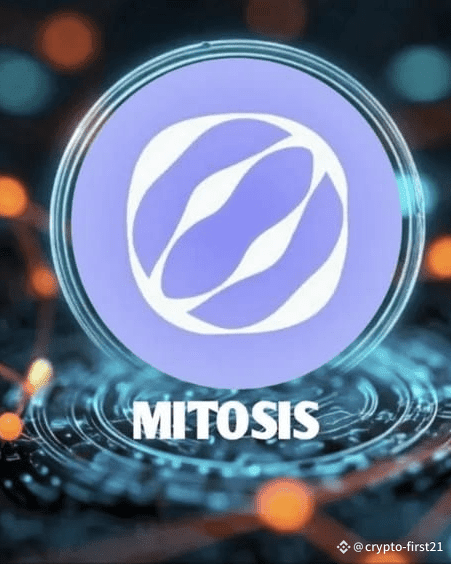
Slippage—the frustrating difference between a trade's expected price and its executed price—has long been a persistent friction point in Decentralized Finance (DeFi). It's a direct consequence of fragmented liquidity, where assets are scattered across dozens of isolated blockchain networks and thousands of individual pools.
However, a new architecture is emerging to address this fundamental flaw. Mitosis ($MITO), a specialized Layer 1 blockchain, is building what it calls a Unified Liquidity Solution (ULS) to serve as a high-efficiency "circulatory system" for Web3. By centralizing and managing capital across multiple chains, Mitosis is setting a new standard for capital efficiency, allowing users to move and trade assets with significantly reduced, or even near-zero, slippage.
The Problem: Liquidity Fragmentation and Its Price Tag
In the multi-chain world of today, a dollar's worth of a token on Ethereum is often isolated from a dollar's worth of the same token on Arbitrum or Optimism. This isolation leads to two major issues that plague the user experience:
High Slippage: When a large trade hits a small, isolated liquidity pool on a specific chain, the trade itself drastically changes the asset ratio, leading to a poorer execution price. This is slippage, and it's particularly pronounced in low-liquidity cross-chain swaps.
Poor Capital Efficiency: Liquidity providers (LPs) must deploy capital into separate pools on every chain they wish to support. This results in idle capital that could be earning yield elsewhere, creating an inefficient system that slows the growth of the overall DeFi market.
Mitosis recognized that the problem wasn't just about moving tokens (which bridges do), but about making the capital immediately and efficiently usable upon arrival.
MITO's Answer: The Unified Liquidity Framework
Mitosis's solution is built on two core innovations: a Layer 1 blockchain optimized for liquidity and a game-changing liquidity model.
Ecosystem-Owned Liquidity (EOL)
Mitosis implements the Ecosystem-Owned Liquidity (EOL) framework. This model aggregates assets from multiple chains into unified, community-governed vaults.
Pooled Capital: Users deposit their assets (like ETH or USDC) into a Mitosis Vault on their native chain (e.g., Ethereum, Arbitrum).
Hub Assets: In return, users receive Hub Assets on the Mitosis Layer 1 chain. These are tokenized, flexible representations of their underlying deposits.
Unified Pool: This pooled capital forms a massive, deep reservoir of liquidity that can be strategically deployed across any connected chain (the "spokes" in the hub-and-spoke model), as determined by community governance.
By consolidating liquidity, Mitosis effectively minimizes the price impact of large trades. A swap that might cause 2-3% slippage on a shallow, fragmented pool on a single chain can be executed with minimal impact against Mitosis's deep, unified reserve.
Programmable and Composable Liquidity
The Hub Assets and the related tokens issued by Mitosis, such as miAssets (representing EOL shares), are programmable and composable. This means the underlying liquidity is always active and working:
Cross-Chain Deployment: The community votes on where the aggregated liquidity should be allocated (via Gauge Voting). This means a user's single ETH deposit can be generating yield across multiple ecosystems simultaneously (e.g., lending on a dApp on Ethereum, providing liquidity on a DEX on Arbitrum).
Flexible Positions: The position tokens (miAssets) themselves can be used in other DeFi applications (e.g., used as collateral or traded) without manually moving the underlying assets.
This continuous, efficient deployment of capital ensures the pool is maximized, leading to the deepest possible liquidity for cross-chain transactions—the technical foundation required to approach a zero-slippage environment.
The User Advantage: Trading Without Compromise
For the everyday DeFi user, Mitosis's Unified Liquidity Solution translates directly into a superior trading experience:
Minimizing Price Risk: The primary benefit is the dramatic reduction in slippage. Traders can execute larger swaps with greater confidence, knowing the final executed price will be nearly identical to the quoted price.
Cost Efficiency: Reduced slippage means less money lost on the price execution, effectively lowering the overall cost of trading.
Seamless Cross-Chain Swaps: Unlike traditional bridging, which often involves multiple steps, delays, and a reliance on fragmented pools, Mitosis’s ULS enables nearly instant, capital-efficient cross-chain swaps.
Mitosis is not merely offering a better bridge; it's offering a completely redesigned liquidity layer for Web3. By solving the core issue of fragmentation, it positions itself to be the essential infrastructure that underpins the next generation of efficient, low-friction, and high-volume Decentralized Finance. The days of accepting high slippage as a necessary evil in DeFi may finally be over.

